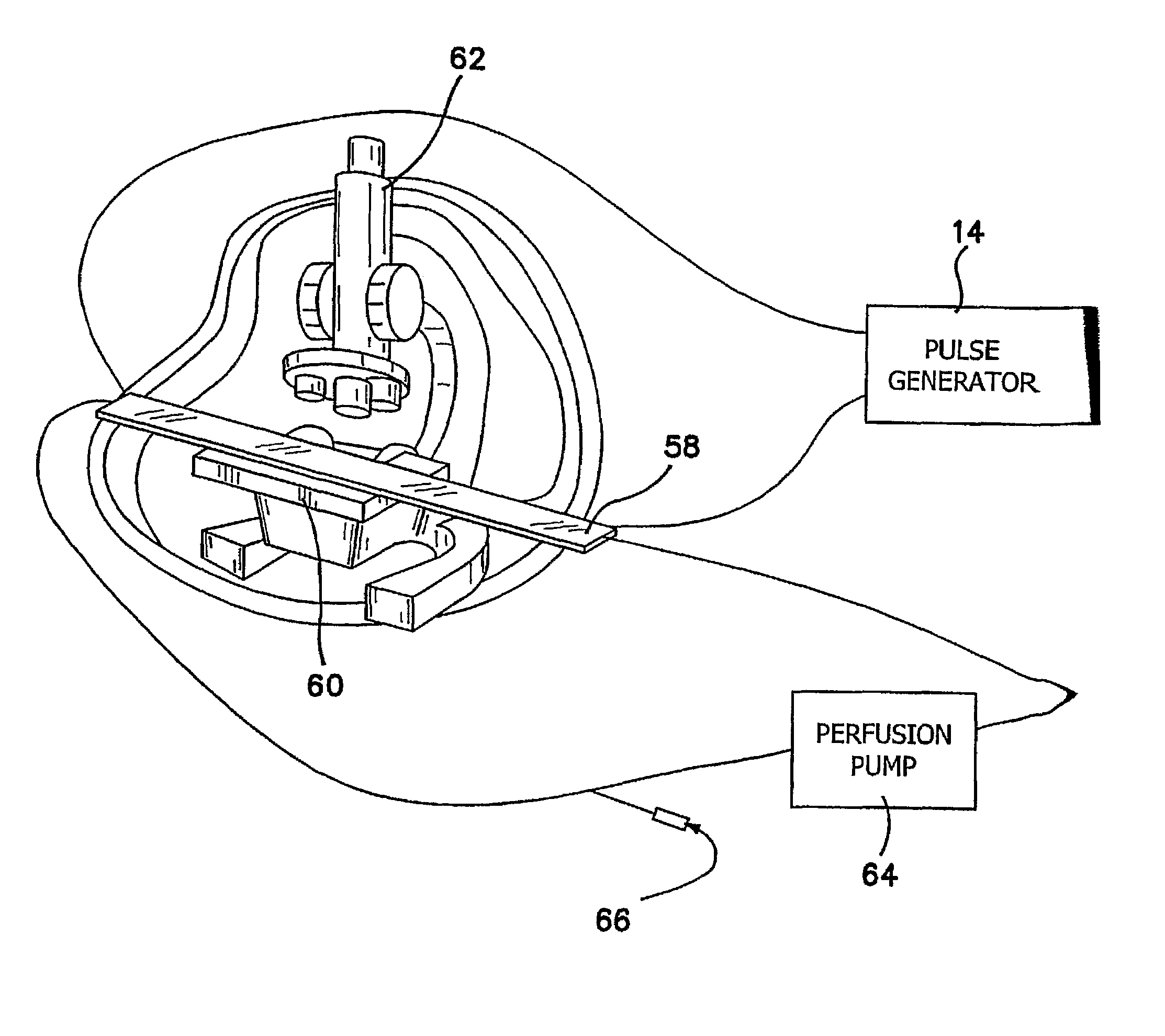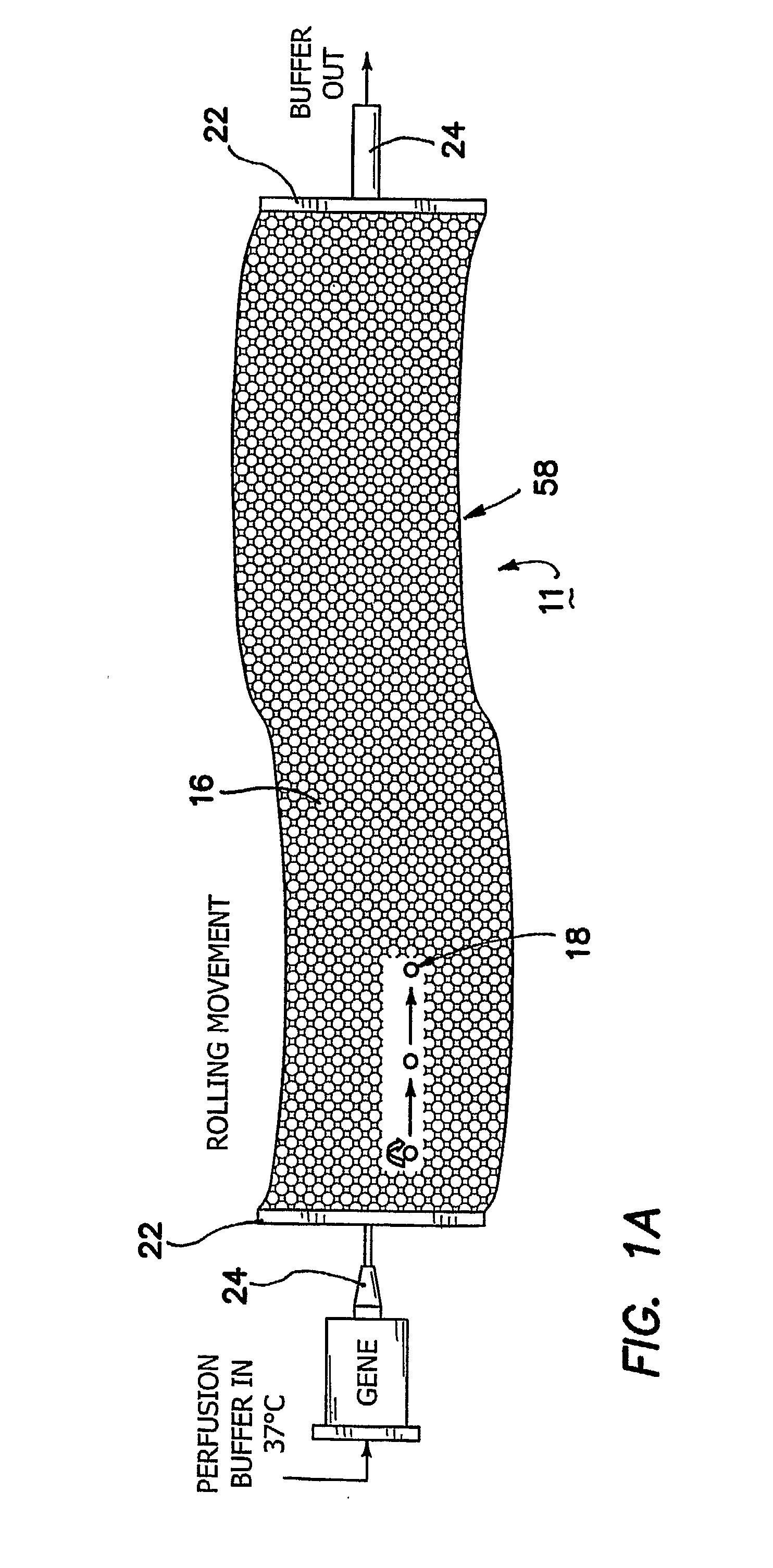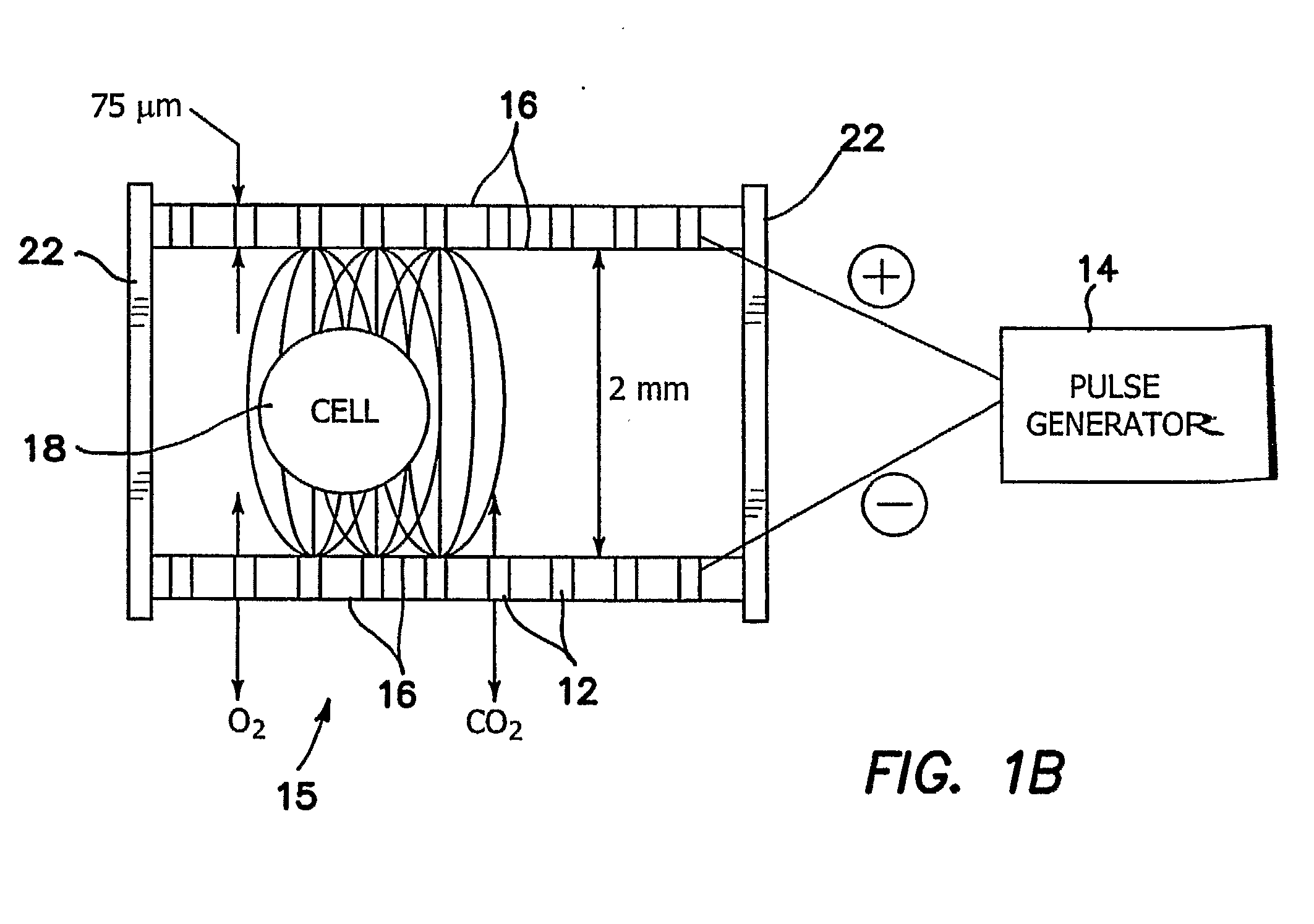Ultra Low Strength Electric Field Network-Mediated Ex Vivo Gene, Protein and Drug Delivery in Cells
a low-power electric field and ex vivo gene technology, applied in specific use bioreactors/fermenters, biomass after-treatment, biochemistry apparatus and processes, etc., can solve the problems of misleading and inaccurate reference to the present bioelectric application, and achieve low strength, minimize or even avoid the effect of reducing the number of induced ion exchanges
- Summary
- Abstract
- Description
- Claims
- Application Information
AI Technical Summary
Benefits of technology
Problems solved by technology
Method used
Image
Examples
second embodiment
[0050]In FIGS. 3 and 4 we provide an apparatus 11 for ultra low strength electric-field mediated ex vivo gene, protein and drug delivery in cells, and clusters, such as islets. A cylindrically shaped or tubular culture chamber 26 is provided with an electrode array 12 similar to that shown in FIGS. 1a, and 2b and is used for applying the electric field from generator 14 to the cell clusters 28. As shown best in the cross-section view of FIG. 3b, chamber 26 is provided with encapsulated electrodes 12 between concentric membranes 16, the electrodes 12b being connected to the negative terminal 40 and electrodes 12a being connected to the positive terminal 42. Electrodes 12a and 12b may be provided in any geometric arrangement desired, but the preferred embodiment is shown in FIG. 3b where the negative electrodes 12b and positive electrodes 12a are geometrically alternated to maximize the fringing field which extends into chamber 26 and hence to cluster 28. The number of electrodes is s...
first embodiment
[0051]FIG. 4 shows that the cylindrical chamber 26, which is unrolled or shown in a linear shape in FIG. 3a, can be helically coiled to form a more three-dimensionally compact system. In this chamber 26 as best seen in the perpendicular cross-sectional view of FIG. 3b, the electrode arrays 12 are closer to the cell clusters 28 than in the first embodiment because the chamber dimensions more nearly approximate the size of the cell clusters themselves. Thus, the LSEFN voltage can be further reduced. For example of field of about 1 V / cm can be employed across chamber 26, which is again included within the definition of ultra low field strength.
third embodiment
[0052]In FIGS. 5 and 6 we provide another apparatus 11 for ultra low strength electric-field mediated ex vivo gene, protein and drug delivery in tissue 32. In this embodiment, the chamber size and shape can be modified to match the various shapes of cultured tissue, or bioengineered scaffolds 32. Two opposing electrode arrays 12 in sealed membranes 16 are provided on the both side of the culture tissue 32 in chamber 30 in a manner similar to FIGS. 1-4. However, the size and shape of frame 22 and the chamber 30 defined within it is customized to the particular shape of the tissue being treated. For example, a section of skin graft tissue or cornea may be the treated tissue in which case frame 22 and the chamber 30 will be contoured to match the section of skin graft tissue, so that low field LSEFN can be effectively performed on the section during perfusion.
[0053]Consider now how the invention is used to provide gene, protein and drug therapy for isolated cells. Any biological cells,...
PUM
| Property | Measurement | Unit |
|---|---|---|
| Temperature | aaaaa | aaaaa |
| Volume | aaaaa | aaaaa |
| Strength | aaaaa | aaaaa |
Abstract
Description
Claims
Application Information
 Login to View More
Login to View More - R&D
- Intellectual Property
- Life Sciences
- Materials
- Tech Scout
- Unparalleled Data Quality
- Higher Quality Content
- 60% Fewer Hallucinations
Browse by: Latest US Patents, China's latest patents, Technical Efficacy Thesaurus, Application Domain, Technology Topic, Popular Technical Reports.
© 2025 PatSnap. All rights reserved.Legal|Privacy policy|Modern Slavery Act Transparency Statement|Sitemap|About US| Contact US: help@patsnap.com



